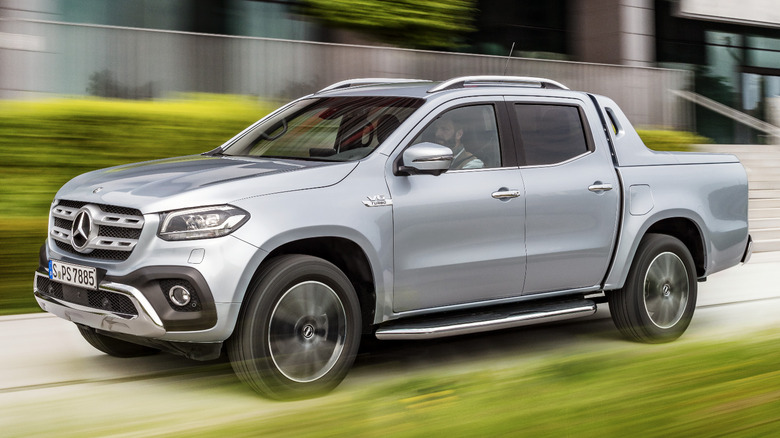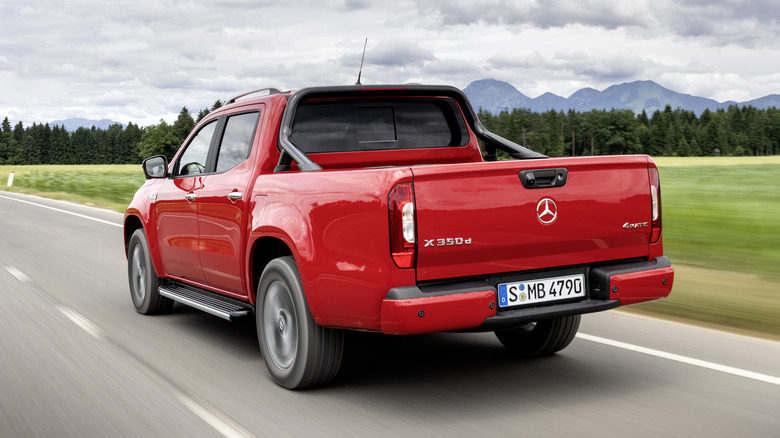Here's Why Mercedes-Benz Doesn't Sell Its Pickup Truck In The U.S.
Mercedes sold its pickup truck, the X-Class, between 2017 and 2020, when it was discontinued due to poor sales. The X-Class was assembled at Nissan's plant near Barcelona in Spain, and it is available in Europe, Australia, New Zealand, Latin America, and South Africa. However, even though it was a pickup truck, which is one of the most popular body styles for U.S. buyers, Mercedes never sold the X in the States, and questions regarding the reasoning behind this decision still linger.
The vehicle was a re-skinned Nissan Navara with a Mercedes-Benz interior and some elements of Mercedes tech, and at first, it was only available with Nissan-sourced four-cylinder diesel engines. The German manufacturer added a more powerful V6 diesel power plant of its own making not long after launch, but this wasn't enough to save the X-Class from getting the axe just three years after it was introduced.
We will never know how successful it would have been if Mercedes chose to also sell it in the U.S., but the likelihood of it making it in America seems slim for several reasons. The primary one has to be its size: Americans prefer larger trucks, and the X-Class was one size class below what most buyers were looking for.
However, there are smaller pickups on sale in America, like the GMC Canyon, Ford Ranger, and even Nissan's own Frontier, that are finding buyers, so there may be more to it than the idea that the X-Class would not have been successful because it was too small. Other factors played into Mercedes' decision.
U.S. sales could have prevented the Mercedes-Benz X-Class' failure
Even though American pickup buyers prefer full-size trucks like the Ford F-150 and the Nissan Titan, smaller models like the Ranger and the Frontier still sell well, appreciated for their superior maneuverability, off-road ability, and fuel efficiency. These smaller trucks are not chosen by those who want to do a lot of towing, which is one of the main reasons why so many Americans buy pickups in the first place, since they can pull massive loads. Smaller pickups, however, are better for getting around a construction site or inspecting power lines located in the middle of a forest.
The fact that the X-Class was sold as a more luxurious pickup could also have allowed it to find favor with American buyers, who are buying ever more lavishly equipped trucks. Even the idea of a pickup truck with a Mercedes-Benz three-pointed star on the hood could have been enough for some to buy one, but we will never know how it could have performed, because Mercedes ended the discussion very early on when it said it had no plans to bring the X to the States.
Mercedes also may have decided against U.S. sales because the X-Class would have ended up costing more than its comparable midsize truck rivals. It is a well-known fact that manufacturers outside America's big three (GM, Ford, and Chrysler) have always struggled to sell pickups, even when their offerings were technically competent and keenly priced, so it could also have been that Mercedes didn't even want to try to make the X work in the American brand-centric U.S. pickup segment.

